Publications
An up-to-date list is available on Google Scholar.
Journal Articles
2025
- Mech. Syst. Signal Process
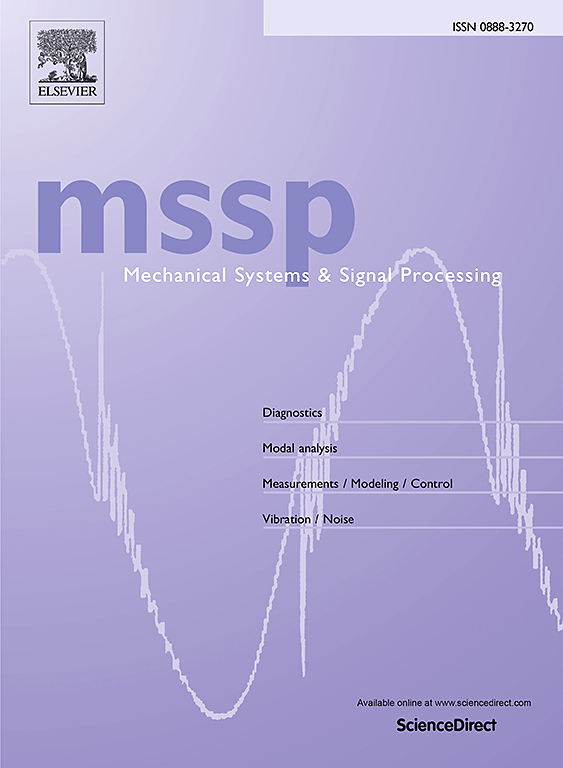 Damage imaging in structural health monitoring with fine-tuned conditional diffusion modelXin Yang, Sergio Cantero-Chinchilla, Morteza Moradi, and 6 more authorsMechanical Systems and Signal Processing, 2025
Damage imaging in structural health monitoring with fine-tuned conditional diffusion modelXin Yang, Sergio Cantero-Chinchilla, Morteza Moradi, and 6 more authorsMechanical Systems and Signal Processing, 2025Damage imaging plays a crucial role in structural health monitoring (SHM) systems for fast and efficient damage assessment. Delay-and-sum (DAS) beamforming is a widely used algorithm in non-destructive testing for damage imaging, but its effectiveness is often compromised by the use of sparse ultrasonic transducer arrays and the difficulty in detecting progressive delamination larger than the wavelength using guided wave-based methods under fatigue loading. Although X-ray imaging offers detailed assessments of progressive delamination, its application is still limited due to the need to interrupt fatigue loading cycles and its high operational cost. To this end, we propose a novel Damage Imaging framework that uses the fine-tuned Conditional Diffusion Model for SHM systems (DI-CDM). Leveraging the powerful image generation capabilities of diffusion models, the framework was fine-tuned by combining DAS beamforming images derived from ultrasonic sparse array data with X-ray images captured during fatigue loading cycles of the composite structures. The proposed approach can generate damage images that reveal the progression of delamination size in the fatigue loading process. The framework was validated through numerical simulations and experimental data from NASA datasets for composite structures, demonstrating its potential and effectiveness by applying diffusion models in SHM applications to enable fast, high-resolution damage imaging.
@article{YANG2025112996, title = {Damage imaging in structural health monitoring with fine-tuned conditional diffusion model}, journal = {Mechanical Systems and Signal Processing}, volume = {236}, pages = {112996}, year = {2025}, issn = {0888-3270}, doi = {10.1016/j.ymssp.2025.112996}, author = {Yang, Xin and Cantero-Chinchilla, Sergio and Moradi, Morteza and Komninos, Panagiotis and Fang, Chen and Liao, Yunlai and Kundu, Pradeep and Zarouchas, Dimitrios and Chronopoulos, Dimitrios}, keywords = {Structural health monitoring, Damage imaging, Conditional diffusion models, Fine-tuning technique, Delay-and-sum beamforming, Ultrasonic sparse array imaging}, dimensions = {true}, } - Sensors
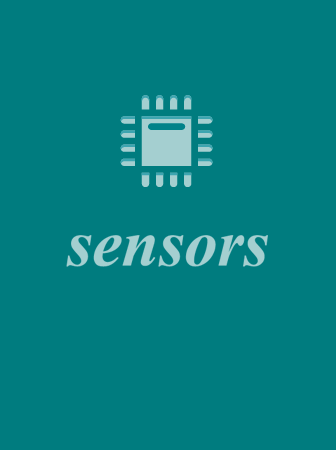 Sensing Techniques for Structural Health Monitoring: A State-of-the-Art Review on Performance Criteria and New-Generation TechnologiesAli Mardanshahi, Abhilash Sreekumar, Xin Yang, and 2 more authorsSensors, 2025
Sensing Techniques for Structural Health Monitoring: A State-of-the-Art Review on Performance Criteria and New-Generation TechnologiesAli Mardanshahi, Abhilash Sreekumar, Xin Yang, and 2 more authorsSensors, 2025This systematic review examines the capabilities, challenges, and practical implementations of the most widely utilized and emerging sensing technologies in structural health monitoring (SHM) for infrastructures, addressing a critical research gap. While many existing reviews focus on individual methods, comprehensive cross-method comparisons have been limited due to the highly tailored nature of each technology. We address this by proposing a novel framework comprising five specific evaluation criteria—deployment suitability in SHM, hardware prerequisites, characteristics of the acquired signals, sensitivity metrics, and integration with Digital Twin environments—refined with subcriteria to ensure transparent and meaningful performance assessments. Applying this framework, we analyze both the advantages and constraints of established sensing technologies, including infrared thermography, electrochemical sensing, strain measurement, ultrasonic testing, visual inspection, vibration analysis, and acoustic emission. Our findings highlight critical trade-offs in scalability, environmental sensitivity, and diagnostic accuracy. Recognizing these challenges, we explore next-generation advancements such as self-sensing structures, unmanned aerial vehicle deployment, IoT-enabled data fusion, and enhanced Digital Twin simulations. These innovations aim to overcome existing limitations by enhancing real-time monitoring, data management, and remote accessibility. This review provides actionable insights for researchers and practitioners while identifying future research opportunities to advance scalable and adaptive SHM solutions for large-scale infrastructure.
@article{Ali25051424, author = {Mardanshahi, Ali and Sreekumar, Abhilash and Yang, Xin and Barman, Swarup Kumar and Chronopoulos, Dimitrios}, title = {Sensing Techniques for Structural Health Monitoring: A State-of-the-Art Review on Performance Criteria and New-Generation Technologies}, journal = {Sensors}, volume = {25}, year = {2025}, number = {5}, issn = {1424-8220}, keywords = {Structural health monitoring, Damage assessment, Sensing techniques, Performance criteria}, doi = {10.3390/s25051424}, dimensions = {true} } - Mech. Syst. Signal Process
 Using removable sensors in structural health monitoring: A Bayesian methodology for attachment-to-attachment uncertainty quantificationChen Fang, Xin Yang, Konstantinos Gryllias, and 4 more authorsMechanical Systems and Signal Processing, 2025
Using removable sensors in structural health monitoring: A Bayesian methodology for attachment-to-attachment uncertainty quantificationChen Fang, Xin Yang, Konstantinos Gryllias, and 4 more authorsMechanical Systems and Signal Processing, 2025Structural responses are vulnerable to perturbations when subjected to variable environmental and operational conditions, thereby contributing to the slow uptake of Structural Health Monitoring (SHM) beyond academic research. More importantly, SHM systems using removable sensors face additional sensing variability due to the inherent uncertainty in sensor reattachment compared to permanently attached sensors. In this study, a novel probabilistic approach is developed for output-only damage detection utilizing ultrasonic guided waves. Experimental uncertainties and sensor attachment factors are simultaneously considered for the first time in a Bayesian context. The uncertainty introduced by reattached sensors is incorporated into the likelihood function in a comprehensive way. Bayesian model class selection using an adaptive sampling scheme is adopted to evaluate the evidence of discrete damage classes. A reference case to an aluminum plate with progressive notches is utilized to demonstrate the significant effects of attachment uncertainty on guided wave signals. The optimal data normalization model for guided wave processing under different attachment states is evaluated using the Mahalanobis distance. The notch length is identified accurately along with the uncertainty, even though the latent adhesive parameters cannot be estimated directly.
@article{FANG2025111973, title = {Using removable sensors in structural health monitoring: A Bayesian methodology for attachment-to-attachment uncertainty quantification}, journal = {Mechanical Systems and Signal Processing}, volume = {224}, pages = {111973}, year = {2025}, issn = {0888-3270}, doi = {10.1016/j.ymssp.2024.111973}, author = {Fang, Chen and Yang, Xin and Gryllias, Konstantinos and Vandepitte, Dirk and Liu, Xuemei and Zhang, Lihai and Chronopoulos, Dimitrios}, keywords = {Removable sensors, Sensing variability, Structural damage detection, Bayesian inference, Guided wave}, dimensions = {true} }
2024
- Mech. Syst. Signal Process
 A decision-level sensor fusion scheme integrating ultrasonic guided wave and vibration measurements for damage identificationXin Yang, Chen Fang, Pradeep Kundu, and 2 more authorsMechanical Systems and Signal Processing, 2024
A decision-level sensor fusion scheme integrating ultrasonic guided wave and vibration measurements for damage identificationXin Yang, Chen Fang, Pradeep Kundu, and 2 more authorsMechanical Systems and Signal Processing, 2024Structural health monitoring is designed to detect and analyze damage in mechanical, aerospace, and industrial structures to prevent potential catastrophic failures. The effectiveness of identifying structural faults and operational damage significantly relies on the sensing technology. Multisensory data fusion, as one of the promising techniques, combines data from multiple sensor modalities for reliable and accurate fault diagnosis. In this paper, we propose a novel decision-level multisensory data fusion approach. This approach combines data from an ultrasonic guided-wave sensor modality and a vibration sensor modality for the first time, aiming to achieve precise and stable damage identification. The Bayesian probabilistic distributions from each sensor modality are obtained using a multi-level Metropolis–Hastings algorithm. Subsequently, a multilayer perceptron network is trained to automatically allocate confidence scores for each sensor modality. The final fusion results are derived from the proposed decision-level fusion approach, combining the Bayesian probabilistic distributions from each sensor modality with allocated confidence scores. Simulation and experiment results indicate that the decision-level fusion approach produces more accurate and reliable outcomes for damage identification compared to relying on a single modality, especially in the case of progressive damage.
@article{YANG2024111597, title = {A decision-level sensor fusion scheme integrating ultrasonic guided wave and vibration measurements for damage identification}, journal = {Mechanical Systems and Signal Processing}, volume = {219}, pages = {111597}, year = {2024}, issn = {0888-3270}, doi = {10.1016/j.ymssp.2024.111597}, author = {Yang, Xin and Fang, Chen and Kundu, Pradeep and Yang, Jian and Chronopoulos, Dimitrios}, keywords = {Structural health monitoring, Multisensory data fusion, Ultrasonic modality, Vibration modality, Bayesian theorem}, dimensions = {true}, } - Measurement.
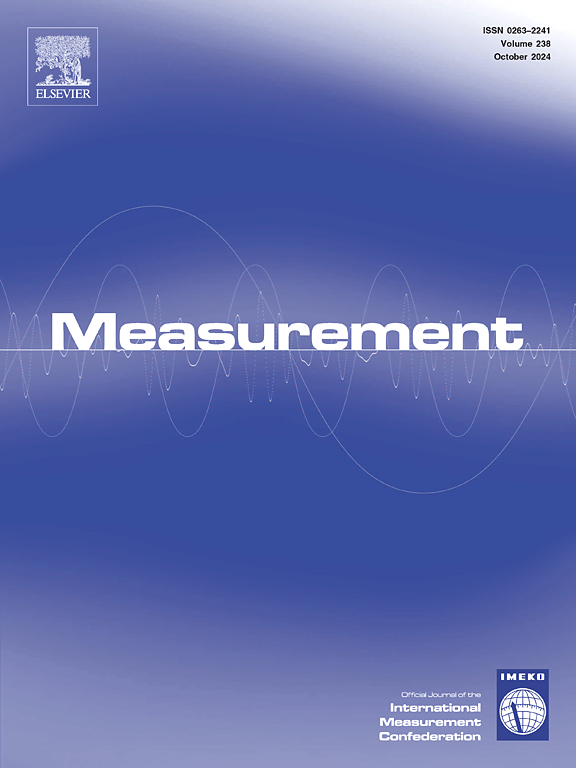 Transfer learning-based Gaussian process classification for lattice structure damage detectionXin Yang, Amin Farrokhabadi, Ali Rauf, and 4 more authorsMeasurement, 2024
Transfer learning-based Gaussian process classification for lattice structure damage detectionXin Yang, Amin Farrokhabadi, Ali Rauf, and 4 more authorsMeasurement, 2024This study presents a novel approach for real-time vision-based structural health monitoring, focusing on evaluating the deformation state of lattice structures. The structures are renowned for their remarkable recovery capabilities and exhibit similar mechanical responses under compressive loads. Despite these characteristics, quickly assessing the health status of the applied structure using knowledge from another related lattice structure is usually time-consuming and impractical. To address this, we propose to combine Gaussian process classification with transfer learning, termed TL-GPC, to detect damage states under compressive loads while also achieving uncertainty quantification. By employing structural deformations captured via the optical flow algorithm as inputs, the internal transfer kernel factor in TL-GPC is tailored to model knowledge transfer between source and target domain inputs. Experimental results show that the proposed TL-GPC model can deliver higher damage detection accuracy while ensuring stable uncertainty quantification in scenarios with limited and unbalanced experimental data.
@article{YANG2024115387, title = {Transfer learning-based Gaussian process classification for lattice structure damage detection}, journal = {Measurement}, volume = {238}, pages = {115387}, year = {2024}, issn = {0263-2241}, doi = {10.1016/j.measurement.2024.115387}, author = {Yang, Xin and Farrokhabadi, Amin and Rauf, Ali and Liu, Yongcheng and Talemi, Reza and Kundu, Pradeep and Chronopoulos, Dimitrios}, keywords = {Structural health monitoring, Damage detection, Transfer learning, Gaussian process classification, Optical flow estimation}, dimensions = {true}, } - Compos. Struct.
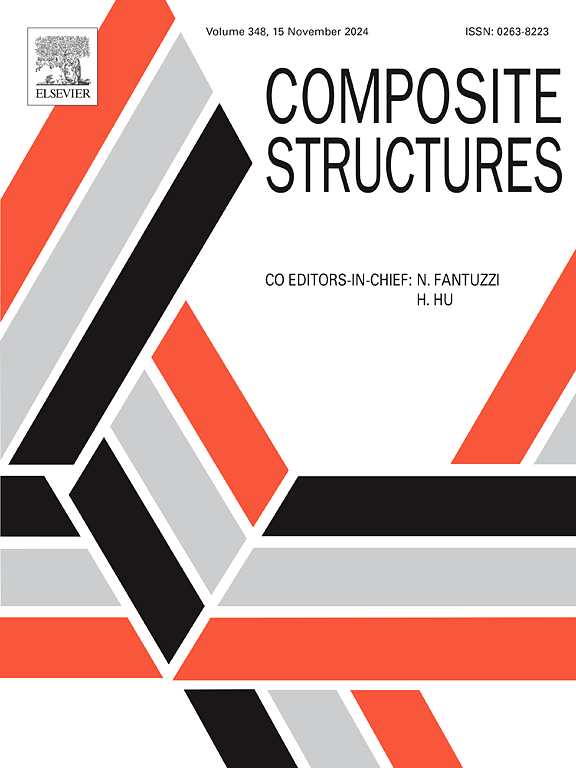 Energy absorption assessment of recovered shapes in 3D-printed star hourglass honeycombs: Experimental and numerical approachesAmin Farrokhabadi, Houyu Lu, Xin Yang, and 5 more authorsComposite Structures, 2024
Energy absorption assessment of recovered shapes in 3D-printed star hourglass honeycombs: Experimental and numerical approachesAmin Farrokhabadi, Houyu Lu, Xin Yang, and 5 more authorsComposite Structures, 2024This study provides an experimental and numerical evaluation of the energy absorption performance of a 3D-printed star hourglass honeycomb structure with a novel design made from pure and reinforced PLA by chopped carbon fibers and continuous glass fiber. The study further investigates the energy absorption response of this structure after the shape recovery due to thermal stimuli under the quasi-static compressive loading. As an additive manufacturing process, Fused Deposition Modeling is used to produce the specimens with pure and reinforced PLA filament. The difference in the nonlinear response of PLA due to plasticity and damage in tension and compression loading directions, as a feature that helps the shape recovery, is considered in mechanical response analysis using the Finite Element approach. Then, in the obtained results distinguish constitutive laws in tension and compression mechanical properties are employed leading to a failure model using the appropriate algorithm consistent with the experiments. According to the obtained results which reveal good agreement regarding the experimental results, by designing appropriate auxetic configuration selecting suitable geometry parameters, and employing the proper material with diverse properties in tension and compression directions, it is possible to fabricate a lattice structure inherits the shape recovery after the compression deformation which exhibits acceptable energy absorption performance even the second shape recovery.
@article{FARROKHABADI2024118444, title = {Energy absorption assessment of recovered shapes in 3D-printed star hourglass honeycombs: Experimental and numerical approaches}, journal = {Composite Structures}, volume = {347}, pages = {118444}, year = {2024}, issn = {0263-8223}, doi = {10.1016/j.compstruct.2024.118444}, author = {Farrokhabadi, Amin and Lu, Houyu and Yang, Xin and Rauf, Ali and Talemi, Reza and {Hossein Behravesh}, Amir and {Kaveh Hedayati}, Seyyed and Chronopoulos, Dimitrios}, keywords = {Continuous fiber-reinforced polymer, Energy absorption, FEM, Star Hourglass Honeycomb, Shape recovery}, dimensions = {true} } - Compos. Struct.
 Deep learning uncertainty quantification for ultrasonic damage identification in composite structuresHouyu Lu, Sergio Cantero-Chinchilla, Xin Yang, and 2 more authorsComposite Structures, 2024
Deep learning uncertainty quantification for ultrasonic damage identification in composite structuresHouyu Lu, Sergio Cantero-Chinchilla, Xin Yang, and 2 more authorsComposite Structures, 2024In this paper, three state-of-the-art deep learning uncertainty quantification (UQ) methods – Flipout probabilistic convolutional neural network (CNN), deep ensemble probabilistic CNN, and Bayesian probabilistic CNN – based on the Visual Geometry Group 13 architecture are proposed. They are compared with a traditional Bayesian inference approach for localizing delamination damage in composite. The law of conditional covariance is used to separate and quantify the predictive variance of the three networks into aleatoric and epistemic uncertainty. The network models’ performance is enhanced through hyperparameter optimization using Hyperband and warm-up optimization algorithms. The performance of the three networks in measuring the uncertainty is assessed on an out-of-distribution (OOD) dataset and validated on an in-distribution (ID) dataset for localization of composite delamination damage. Results indicate high accuracy in predicting damage locations for all methods on the ID dataset. On the OOD dataset, the Flipout and deep ensemble network have better performance, stably measuring aleatoric uncertainty in both trained and untrained areas, while the Bayesian network’s aleatoric uncertainty shows a discernible change across both areas. All three networks effectively measure epistemic uncertainty. Overall in both ID and OOD datasets, the Flipout network provides an optimal balance among training efficiency, UQ effectiveness and accuracy in predicting damage locations.
@article{LU2024118087, title = {Deep learning uncertainty quantification for ultrasonic damage identification in composite structures}, journal = {Composite Structures}, volume = {338}, pages = {118087}, year = {2024}, issn = {0263-8223}, doi = {10.1016/j.compstruct.2024.118087}, author = {Lu, Houyu and Cantero-Chinchilla, Sergio and Yang, Xin and Gryllias, Konstantinos and Chronopoulos, Dimitrios}, keywords = {Uncertainty quantification, Deep ensemble, Flipout networks, Bayesian network, Bayesian inference, Damage localization}, dimensions = {true} }
2021
- J. Dyn. Sys., Meas., Control.
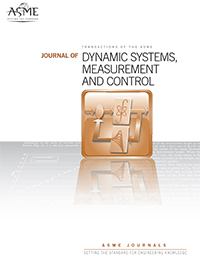 A Particle Filter and Long Short-Term Memory Fusion Technique for Lithium-Ion Battery Remaining Useful Life PredictionXiaosong Hu, Xin Yang, Fei Feng, and 2 more authorsJournal of Dynamic Systems, Measurement, and Control, Jan 2021
A Particle Filter and Long Short-Term Memory Fusion Technique for Lithium-Ion Battery Remaining Useful Life PredictionXiaosong Hu, Xin Yang, Fei Feng, and 2 more authorsJournal of Dynamic Systems, Measurement, and Control, Jan 2021Accurate prediction of the remaining useful life (RUL) of lithium-ion batteries can improve the durability, reliability, and maintainability of battery system operation in electric vehicles. To achieve high-accuracy RUL predictions, it is necessary to develop an effective method for long-term nonlinear degradation prediction and quantify the uncertainty of the prediction results. To this end, this paper proposes a hybrid approach for lithium-ion battery RUL prediction based on particle filter (PF) and long short-term memory (LSTM) neural network. First, based on the training set, the model parameters are iteratively updated using the PF algorithm. Second, the LSTM model parameters are obtained using the training set. The mean and standard deviation in the prediction stage are obtained through Monte Carlo (MC) dropout. Finally, the mean value predicted by MC-dropout is used as the measurement for the PF in the prediction phase, the standard deviation represents the uncertainty of the prediction result, and the mean and standard deviation are integrated into the measurement equation of the model. The experimental results show that the proposed hybrid approach has better prediction accuracy than the PF, LSTM algorithm, and two other types of hybrid approaches. The hybrid approach can obtain a narrower confidence interval.
@article{Hu2021, author = {Hu, Xiaosong and Yang, Xin and Feng, Fei and Liu, Kailong and Lin, Xianke}, title = {A Particle Filter and Long Short-Term Memory Fusion Technique for Lithium-Ion Battery Remaining Useful Life Prediction}, journal = {Journal of Dynamic Systems, Measurement, and Control}, volume = {143}, number = {6}, pages = {061001}, year = {2021}, month = jan, issn = {0022-0434}, doi = {10.1115/1.4049234}, dimensions = {true} }






